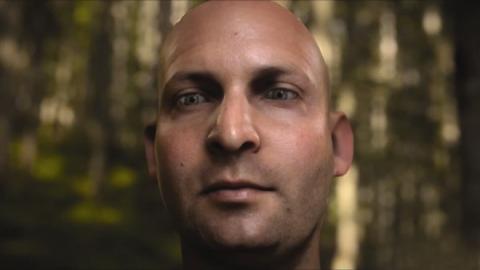Skin-deep modelling holds key to natural digital faces
The team have now massively cranked up the level of detail. Using a specially developed lighting system and camera, they photographed samples of skin from people's chins, cheeks and foreheads at a resolution of about 10 micrometres, so that each skin cell was spread across roughly three pixels. They then used the images to create a 3D model of skin and applied their light reflection technique to it. The result was CGI skin complete with minute structures like pores and microscopic wrinkles. Finally, they fed the CGI images to an algorithm that extended them to fill in an entire CGI face.
Typically, CGI uses a standard set of values for skin structure, says Ghosh. But for big-budget films, digital effects companies like Weta Digital – which used some of Ghosh and Debevec's techniques in the movie Avatar, for example – prefer to tailor skin textures to individuals. To create the blue-skinned Na'vi, for example, artists took surface details like moles and wrinkles and added them to the characters by hand. "In movies they zoom in to show that stuff off," says Ghosh, but the work is a slow process. Ghosh and Debevec's system, which Ghosh presented at the Games and Media Event at Imperial College London in May, could automate this level of customisation.
The work has already inspired the Digital Ira project (see "Put on your game face"), a collaboration between computer games publisher Activision, based in Santa Monica, California, and the USC group. The aim is to offer a software package that can generate photorealistic digital actors on gaming consoles rather than supercomputers. "The project won't be complete until we can go from a human to a digital actor of Ira's quality in an afternoon's work," says Javier von der Pahlen of Activision.
It's not only the entertainment industry that is eyeing this technology. In 2010, the cosmetics company Avon gave Ghosh funding to explore whether his digital skin could be used to simulate the application of different kinds of make-up. Other cosmetics firms have also showed interest in the idea. Ghosh thinks that one day we will have an app that offers a virtual try-before-you-buy service for make-up. "You would arrive at a kiosk and have your face scanned," he says. The software would then show you exactly what your skin would look like with, for example, a certain foundation applied, he says.
Douglas Heaven

